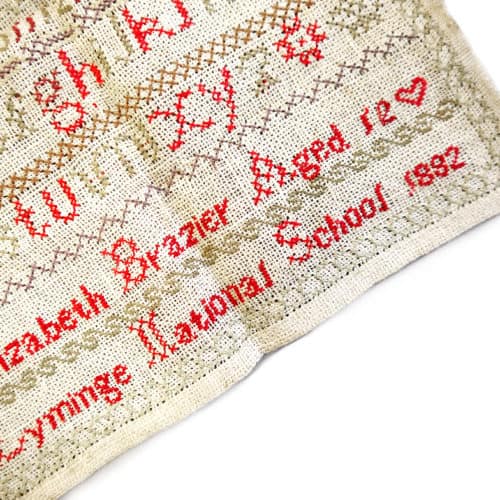Cabinets of Curiosity 19: sampler
It’s a needlework sampler made by 12 year old Elizabeth Brazier at the Lyminge National School in 1882.
Samplers were decorative pieces of needlework created by girls. They showed off needlework skills and a wide variety of stitches.
In Victorian times it was considered important that women learn to sew, to make and repair clothes, or to make a living as a seamstress.
Samplers were often framed and hung in the family home. They often included the alphabet and a religious verse, as well as the name and age of the person.
Elizabeth was one of 8 children living with her parents, Robert and Jane Brazier at Etchinghill, near Lyminge.
Her dad was a poorly paid farm worker. The family took in 2 boarders, people who rented rooms, to make some extra money.
In a small cottage, Elizabeth would have had to share a room with a few of her siblings.
Did you know?
National schools were set up in the 19th century to provide basic education to poor children.
Fascinating Fact
Soldiers and sailors also had to learn to sew, to repair uniforms or mend sails. They kept their sewing kit in a roll of canvas or linen known as a housewife!

